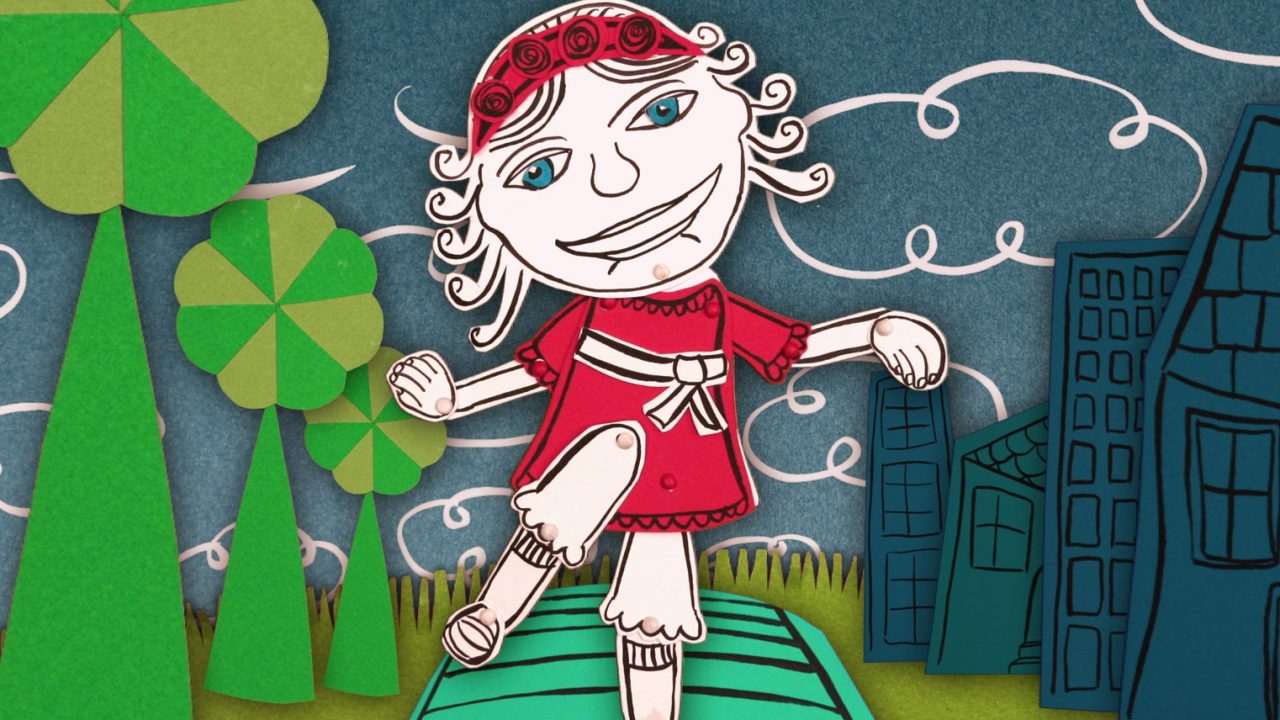
Mini-Lesson for Big Mouth
Mini-Lesson for Big Mouth
Mini-Lesson – Big Mouth
Theme: Relationships and Communication
Ages: 9-11
Big Mouth, Andrea Dorfman, provided by the National Film Board of Canada
Key Words/Topics: Truth, Communication, Social Relationships, Empathy, Unique Character Traits, Differences, Poetry
Guiding Question: Is telling the truth always the right thing to do?
Summary: Trudy is a little girl who bluntly says what she thinks. Her alarming honesty makes those around her uncomfortable and harms her early social relationships.
Activity #1
Group discussion
- After watching the clip, ask students why Trudy’s parents feel hurt by their daughter’s first words.
- You can then ask them what they think about the title Big Mouth. Explain to them that the central themes of the short film will be explored, but its form will be examined first.
Analysis of the text of the clip
“Trudy was a baby, her parents loved her dearly. And when their Trudy smiled, she gave them a rush of instant joy, their one and only awesome wonder child.
She started to grow and learned how to walk and when she finally had something to say she said, ‘You have a big nose daddy, and mommy you have big hairs that are grey.’
Trudy’s parents were hurt. Their daughter’s words really stung and they were both taken aback.
But then Trudy’s mom said, ‘Our daughter’s right, my love. My hair’s no longer black.’
And Trudy’s dad sniffed, ‘Well, I never noticed it before, but my sniffer is kind of big.
What more can we ask for than a child who tells the truth?’
And then they all danced a jig.”
Students may notice that this text has a certain poetic quality.
Beyond the story they tell, the words used here create particular sounds and rhythms. If this literary style has not already been discussed in class, this is a good opportunity to do so. The students have undoubtedly all encountered poetry in their lives, whether through nursery rhymes, songs or books. Give them a chance to share their experiences as you assess their initial level of knowledge.
You can take the opportunity to introduce the vocabulary of poetry: verses, stanzas, rhymes.
Finish the activity by writing a short poem in praise of a relative or friend. Writing poetry develops vocabulary, and using a dictionary of synonyms will help you enrich your text and find words and sounds that are useful for rhyming.
Activity #2
Group discussion
- What is Trudy’s main problem?
- How do the people she meets deal with this problem?
- How does Trudy experience these situations?
Introduce the following two expressions to the class
- “Some truths are better left unsaid.”
- Hiding the truth can be beneficial. Indeed, it’s better to hide certain truths that may hurt the other person or your audience.
- “White lie”
- A lie that’s told with the intent of being useful or kind to someone.
Discussion
- Which of these two expressions best describes Big Mouth?
- Have you ever hidden the truth or told a lie so as not to hurt someone’s feelings?
- Do you think it’s worse to hide the truth or to lie? What if it’s just to be kind to a friend or family member?
- Of course, there isn’t necessarily a right or wrong answer to this ethical question.
- Ask students to write a short real-life or fictional situation that illustrates each of the two expressions. Their short scenarios may end with either a positive or negative conclusion.
- Do Trudy’s comments pass the three-filter test? Truth? Kindness? Usefulness?
Activity #3
Group discussion
- What are the character traits of the people Trudy speaks about?
- Why do you think she feels the need to talk about them?
- Can you think of some people with character traits that you find impressive?
- Are these special traits only physical?
- Do you have unique character traits that make you special? Do you have qualities or traits that are unique to your identity?
- Have you ever been hurt by someone who drew attention to one of your unique traits?
- Why do people think differences are either good or bad?
- Why are people afraid to be different?
- Ask students to write down one of their physical traits or personality traits that they are proud of and explain how this characteristic/trait helps them to perform better and succeed in difficult activities or tasks.
Student reflection
- In teams of two or three, get the students to think about the saying “Birds of a feather flock together” and then write a list of situations that would demonstrate this idea.
- Returning to an entire-class discussion, listen to the students’ ideas and lead the discussion toward examples of groups of people who have similar affinities (e.g., extracurricular), interests (at recess) or ages (the class).
- Eventually direct the discussion to the topics of differences, discrimination and tolerance:
- While it is true that similarities create connections, are we all the same? Equal? Here in the classroom? In Canada? On Earth?
- What differences can cause conflict between humans?
- Is this normal? Can we change? Why do differences create conflict? How can we reduce our fear of difference?
Pour lire cet article en français, cliquez ici.
Discover more Mini-Lessons | Watch educational films on NFB Education | Watch educational playlists on NFB Education | Follow NFB Education on Facebook | Follow NFB Education on Pinterest | Subscribe to the NFB Education Newsletter



